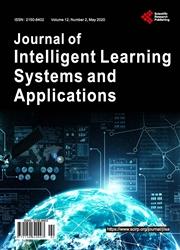Accurate Plant MicroRNA Prediction Can Be Achieved Using Sequence Motif Features
引用次数: 17
Abstract
MicroRNAs (miRNAs) are short (~21 nt) nucleotide sequences that are either co-transcribed during the production of mRNA or are organized in intergenic regions transcribed by RNA polymerase II. In animals, Drosha, and in plants DCL1 recognize pre-miRNAs which set themselves apart by their characteristic stem loop (hairpin) structure. This structure appears important for their recognition during the process of maturation leading to functioning mature miRNAs. A large body of research is available for computational pre-miRNA detection in animals, but less within the plant kingdom. For the prediction of pre-miRNAs, usually machine learning approaches are employed. Therefore, it is necessary to convert the pre-miRNAs into a set of features that can be calculated and many such features have been described. We here select a subset of the previously described features and add sequence motifs as new features. The resulting model which we called MotifmiRNAPred was tested on known pre-miRNAs listed in miRBase and its accuracy was compared to existing approaches in the field. With an accuracy of 99.95% for the generalized plant model, it distinguishes itself from previously published results which reach an average accuracy between 74% and 98%. We believe that our approach is useful for prediction of pre-miRNAs in plants without per species adjustment.利用序列基序特征可以实现准确的植物MicroRNA预测
MicroRNAs (miRNAs)是一种短的(~21 nt)核苷酸序列,在mRNA的产生过程中共转录,或者由RNA聚合酶II转录在基因间区域组织。在动物、Drosha和植物中,DCL1识别的pre- mirna通过其特有的茎环(发夹)结构将自己区分开来。在成熟过程中,这种结构对它们的识别似乎很重要,从而导致功能成熟的mirna。大量的研究可用于计算动物的pre-miRNA检测,但在植物界却很少。对于pre- mirna的预测,通常采用机器学习方法。因此,有必要将pre- mirna转化为一组可以计算的特征,并且已经描述了许多这样的特征。我们在这里选择前面描述的特征的一个子集,并添加序列motif作为新特征。我们将得到的模型称为MotifmiRNAPred,并在miRBase中列出的已知pre-miRNAs上进行了测试,并将其准确性与该领域现有方法进行了比较。广义植物模型的准确率为99.95%,与之前发表的平均准确率在74%到98%之间的结果有所区别。我们相信我们的方法对于预测植物中没有物种调节的pre- mirna是有用的。
本文章由计算机程序翻译,如有差异,请以英文原文为准。
求助全文
约1分钟内获得全文
求助全文

 求助内容:
求助内容: 应助结果提醒方式:
应助结果提醒方式:


